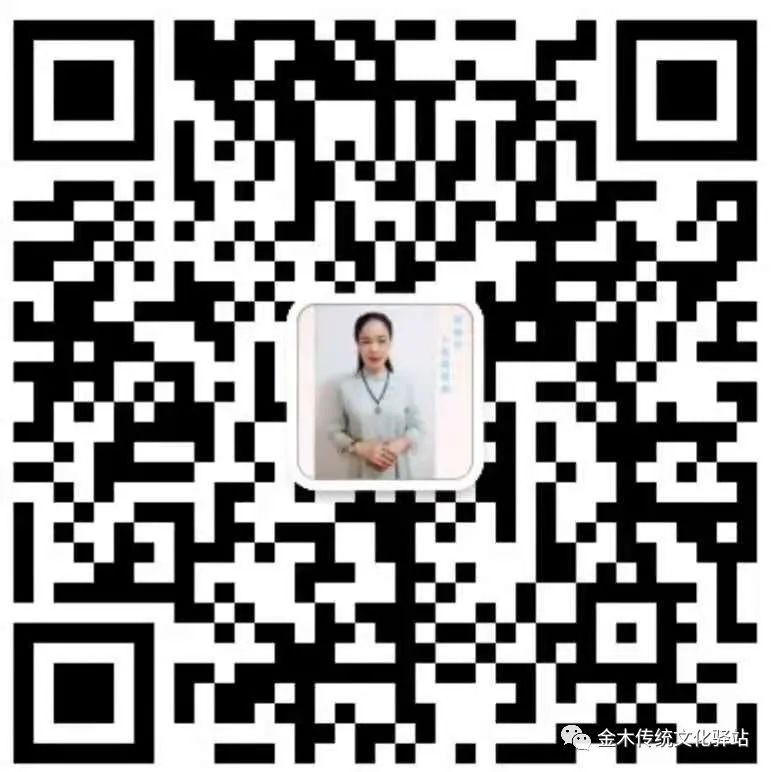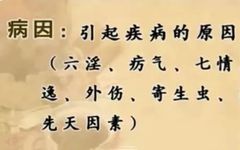
Etiology: The causes of diseases.
(Six Excesses, Epidemic Qi, Seven Emotions, Diet, Work and Rest, External Injuries, Parasites, Drug Pathogens, Medical Errors, Congenital Factors)
Methods to Explore Etiology:
· Inquire about the onset and related circumstances to deduce the etiology.
· Conduct a comprehensive analysis of clinical manifestations to deduce the etiology through analogy – pattern differentiation to seek causes.
· In certain cases: External pathogens, internal injuries, formation of pathological products, and other causes.
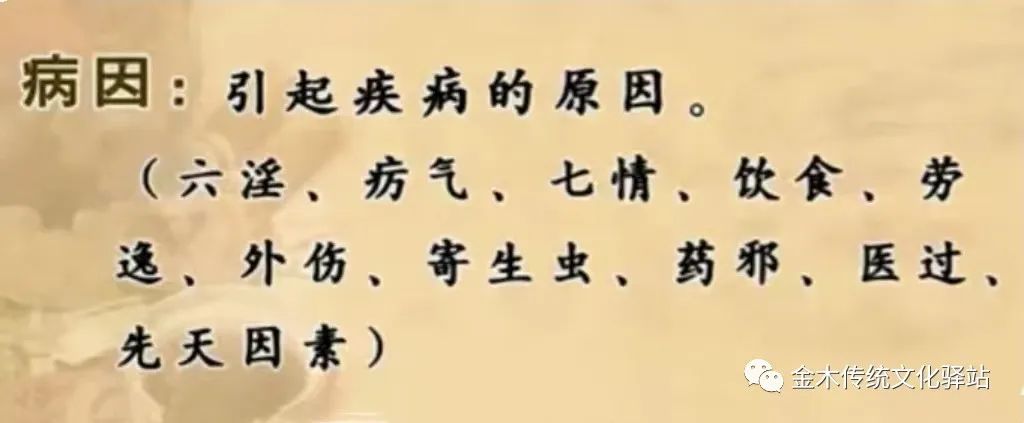
Six Qi: Wind, Cold, Heat, Dampness, Dryness, and Fire are the six normal climatic factors in nature.
Causes of Six Excesses:
1. Excess or deficiency of the six Qi
2. Presence of Qi at an inappropriate time
3. Sudden changes in climate
4. Decreased adaptability of individuals
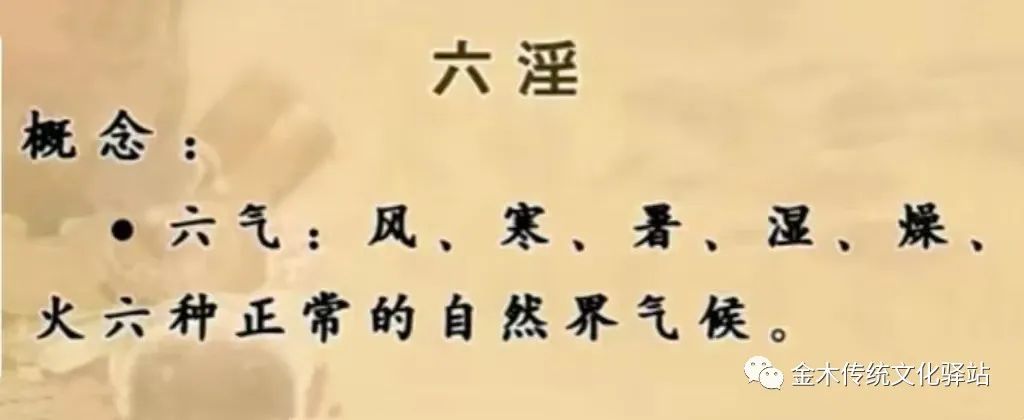
Common pathogenic characteristics of the Six Excesses:
· External pathogenic: Often invades through the skin and respiratory tract.
· Regional: Related to the environmental conditions of the living area.
· Seasonal
· Coexisting: Can invade alone or in combination.
· Transformative: Under certain conditions, the symptoms caused by the Six Excesses can transform.

Wind Pathogen: A pathogenic factor characterized by lightness, dispersion, and mobility (causing external wind diseases). It is the primary Qi in spring.
Characteristics and pathogenic features of Wind Pathogen:
· Wind is a Yang pathogen, light and dispersive, easily attacking Yang positions (as a Yang pathogen).
· Wind is characterized by its ability to move and change frequently.
Movement: Wind pathogens have the characteristic of being mobile and unpredictable.
Change: Refers to the unpredictable nature of wind pathogens causing diseases.
· Wind is proactive:
Pathogenic characteristics include instability.
· Wind is the leader of all diseases:
First, it often combines with other pathogens to harm the body, serving as a precursor to external pathogenic diseases.
Second, wind is the most common cause of disease.
Wind moves upward, while Dampness descends.
Wind Cold: Symptoms include aversion to wind, sweating, fever, cough, nasal congestion, runny nose, floating and slow pulse, and pain in the head and body.
Gui Zhi Tang (Cinnamon Twig Decoction)
Wind diseases: Wind Bi (Wind Obstruction), Xing Bi (Moving Bi), Wind Rash, Stroke, Facial Paralysis (symptoms are variable).
Wandering joint pain – Snake
Wandering animal medicines
Involuntary movements in the body – Wind
Tian Ma (Gastrodia) – does not move in the wind, sways on its own (Ding Feng Cao).
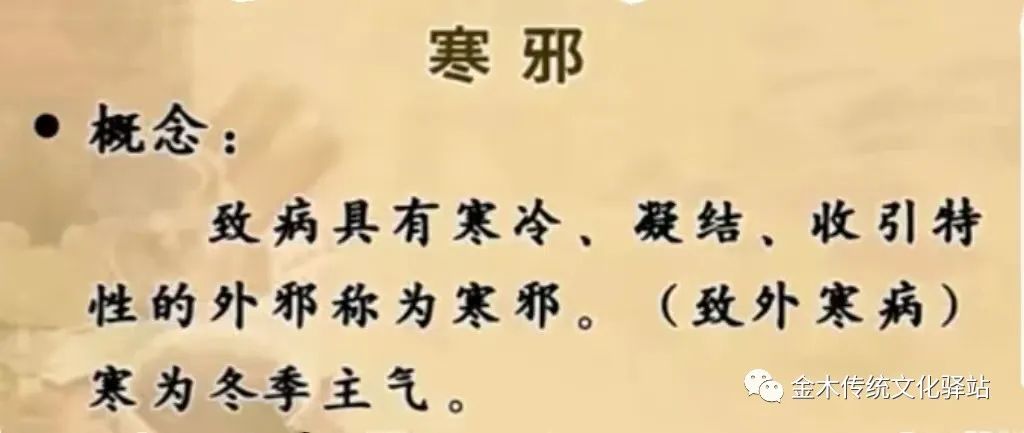
Cold Pathogen: A pathogenic factor characterized by coldness, condensation, and contraction (causing external cold diseases). Cold is the primary Qi in winter.
Cold Damage: Cold pathogens harm the skin and obstruct the Wei Yang.
Internal Cold: Cold pathogens penetrate internally, harming the Yang Qi of the organs.
Characteristics and pathogenic features of Cold Pathogen:
· Cold is a Yin pathogen, easily harming Yang Qi.
· Cold is characterized by stagnation.
· Cold is characterized by contraction: it constricts and pulls.
Cold Damage: Symptoms include severe aversion to cold, no sweating, mild fever, pain in the head and body (worsens with cold), cough (throat pain), nasal congestion, runny clear mucus, white tongue coating, and tight floating pulse.
Ma Huang Tang (Ephedra Decoction) – disperses cold. Ma Huang Tang is a TCM formula that releases the exterior, induces sweating, and clears the lungs to relieve cough. It is used for external wind-cold excess syndrome.
Symptoms include aversion to cold, fever, body aches, no sweating, and cough, with a thin white tongue coating and tight floating pulse. It is commonly used to treat colds, influenza, acute bronchitis, and bronchial asthma associated with wind-cold excess syndrome.
In Ma Huang Tang, the main ingredients are Gui Zhi (Cinnamon Twig), Xing Ren (Apricot Kernel), and Gan Cao (Licorice), which work together to induce sweating, release the exterior, and clear lung Qi. It is suitable for cold damage with no sweating.
Differences between Wind and Cold Pathogens:
Wind pathogens are mobile and can cause pain to move; Cold pathogens do not cause sweating, are characterized by cold excess, and can be resolved with Ma Huang Tang.
Acupuncture points for external wind-cold moxibustion: Dazhui (Du 14), Fengmen (BL 12), Feishu (BL 13), Zhongfu (LU 1), Yunmen (LU 2).
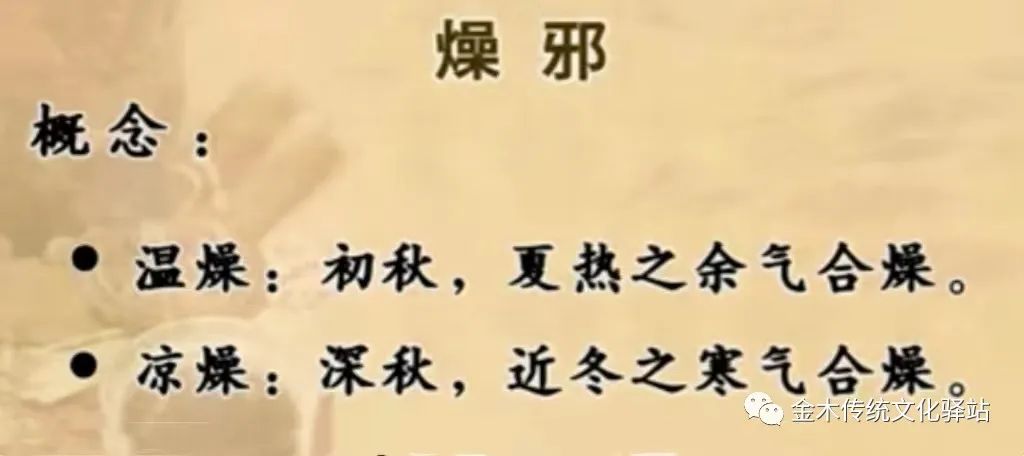
Dryness Pathogen: A pathogenic factor characterized by dryness, contraction, and cleansing (causing external dryness diseases). It is the primary Qi in autumn.
Characteristics and pathogenic features of Dryness Pathogen:
· Dryness is harsh and easily harms body fluids.
Dryness easily harms the lungs.
Symptoms include dryness of the mouth, nose, throat, skin, constipation, and dry cough.
Moistening and Dryness Herbs:
Raw Snow Pear – clears heat and generates fluids.
Stewed Snow Pear – nourishes Yin and moistens the lungs.
Honey
Lotus Leaf – clears summer heat and dispels dampness.
Heat (Fire) Pathogen:
Heat (Fire) Pathogen: A pathogenic factor characterized by heat and rising (causing external heat diseases).
Warm – Heat – Fire
Heat (Fire) Pathogen:
· Warm is the gradual increase of heat, while fire is the extreme of heat.
· Heat is a pathogenic Qi, often caused by external factors; heat disperses, while fire accumulates.
Heat (Fire) Pathogen:
· Fire:
Less fire: normal Yang Qi that warms and transforms.
Excess fire: pathogenic heat (hyperactivity).
Heat – causes blood to rise.
Heat – disturbs the spirit.
Methods to Explore Etiology:
· Conduct a comprehensive analysis of clinical manifestations to deduce the etiology through analogy – pattern differentiation to seek causes.
Six Excesses: Wind, Cold, Heat, Dampness, Dryness, and Fire are six external pathogenic factors (including biological and physical-chemical factors).
-
Influenza – biochemical internal environment manifests different symptoms in individuals with different constitutions.
-
Wind Cold – Ma Huang Tang, Gui Zhi Tang (Ying Wei disharmony).
-
Wind Heat – Clear Heat (viral infection).
-
Wind Dampness – Transform Dampness and dispel Wind.
Causes and conditions lead to results.
The highest realm of Sun Tzu’s Art of War – to win without fighting.
Superbugs, resistant to all antibiotics.

Dryness Pathogen:
· Warm Dryness: Early autumn, residual heat from summer combines with dryness.
· Cool Dryness: Late autumn, cold air combines with dryness.
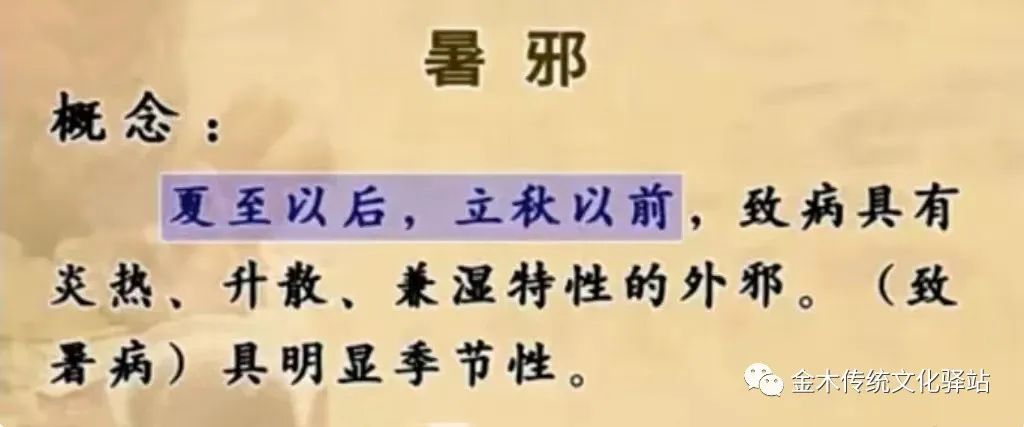
Heat Pathogen: After the summer solstice and before the beginning of autumn, characterized by heat, rising, and dampness (causing heat diseases). It has a clear seasonality.
Heat/Rising/Dampness
Characteristics and pathogenic features of Heat Pathogen:
· Heat is a Yang pathogen, its nature is fiery.
· Heat rises and scatters, disturbs the spirit, and consumes fluids and Qi.
· Heat often accompanies dampness.
Heat/Rising/Dampness
Rising – disturbs the spirit, consumes fluids, and depletes Qi.
Heat Stroke:
1. Heat Stroke – heat symptoms + Qi depletion and fluid consumption, irritability.
2. Heat Dampness – heat symptoms + Qi depletion and fluid consumption + dampness symptoms (heavy head and body, loose stools), irritability.
Heat Stroke – sudden fainting under high temperatures.
Clear Heat – Watermelon, Winter Melon, Lotus Leaf.
Cholera, plague, SARS, hemorrhagic fever, malaria, measles.
Concept: A class of external pathogens with strong pathogenicity and infectiousness.
Transmission routes: Air, diet, insect bites.
Pathogenic characteristics:
Highly infectious, easy to spread.
Sudden onset, severe condition.
One Qi, one disease, similar symptoms.
Factors affecting the generation of epidemic Qi:
1. Environmental factors
2. Climatic factors
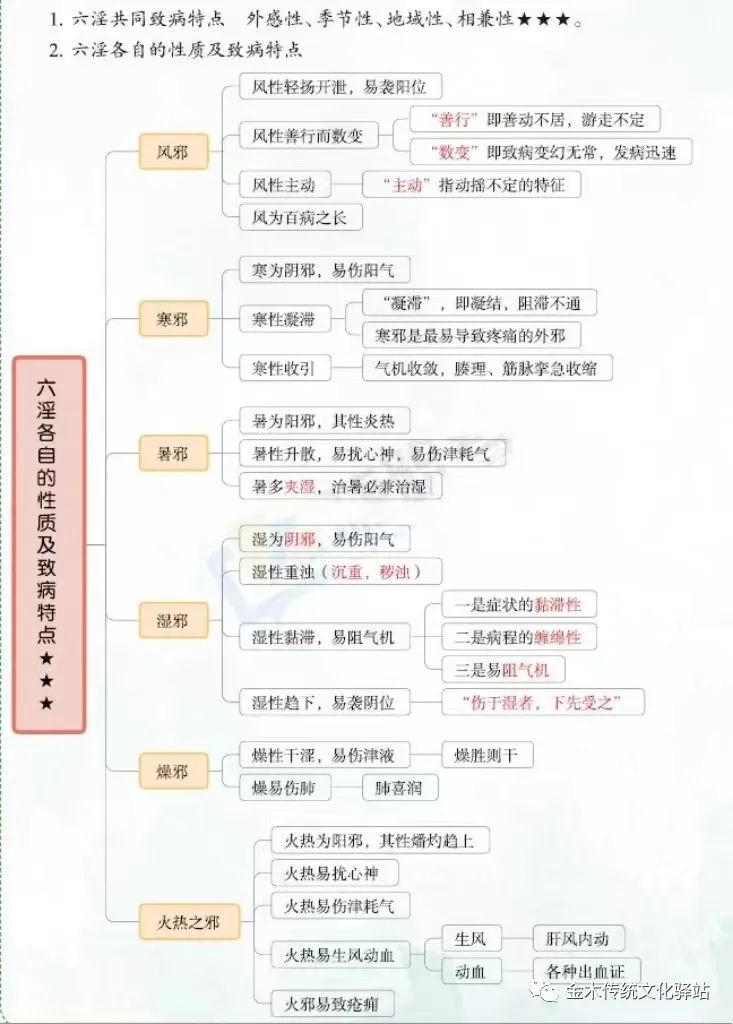
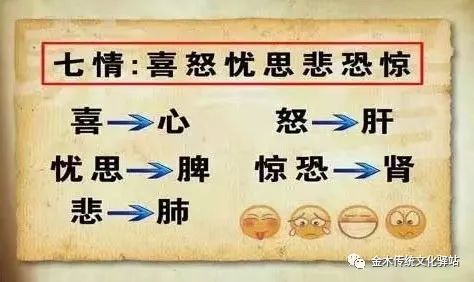

Seven Emotions
Seven Emotions:
Refers to the seven normal emotional changes of joy, anger, worry, thought, sadness, fear, and shock.
Pathogenic conditions: Sudden, intense, prolonged.
Prerequisite: Exceeding the physiological regulation range of individuals.
Definition of Internal Injury from Seven Emotions:
Seven emotions directly affect the internal organs, Qi, and blood, leading to the occurrence or triggering of diseases – internal injury emotional diseases.
Relationship between Seven Emotions and the Essence of Internal Organs:
Pathology (Physiology) – Changes in the Qi and blood of the organs affect emotional changes.
Pathogenic characteristics of Internal Injury from Seven Emotions: Directly harms the internal organs – Seven emotions primarily affect the heart spirit (each organ corresponds to it);
Anger harms the liver, joy harms the heart, thought harms the spleen,
-
Worry harms the lungs,
Fear harms the kidneys.
Multiple emotions intertwined, often harming the heart, liver, and spleen,
easily damaging latent diseases in the organs.
Latent diseases: Refers to diseases that have occurred but do not have obvious clinical manifestations.
Impact on the Qi mechanism of the internal organs:
Anger causes Qi to rise: Excessive anger causes liver Qi to rebel, and blood follows Qi to rebel.
Joy causes Qi to relax: Excessive joy disperses heart Qi, causing the spirit to be unsettled.
Thought causes Qi to stagnate: Excessive thinking leads to spleen Qi stagnation.
Sadness causes Qi to deplete: Excessive sadness damages lung Qi.
Fear causes Qi to descend: Excessive fear causes kidney Qi to be unstable, leading to Qi leakage.
Shock causes Qi to be chaotic: Sudden shock causes heart Qi to disperse, and the spirit has no place to return.
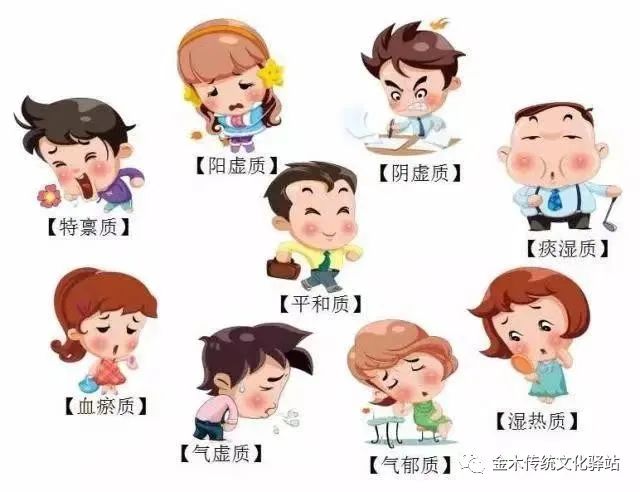
Pathogenic characteristics of Internal Injury from Seven Emotions:
Impact on the Qi mechanism of the internal organs: Five emotions transform into fire – Qi stagnation caused by seven emotions can transform into heat if prolonged.
Commonly manifests as emotional diseases – diseases triggered by emotional stimuli.
Stagnation heat – soothe + clear.
Emotional guidance: Counseling and persuasion; resolving doubts; expressing emotions.
Emotional stimulation: Using emotions to stimulate emotions; diverting attention.
Suggestion: Psychological suggestion.
 Overwork
Overwork
Overwork:
Excessive physical labor: Overwork depletes Qi and damages the body.
Excessive mental labor: Overthinking harms blood (heart and spleen).
Excessive sexual activity: Excessive sexual activity harms essence (kidneys).
Heart and spleen deficiency (Gui Pi Wan).
 Overindulgence
Overindulgence
Overindulgence:
-
Underuse of the brain leads to weakened spirit.
-
Qi and blood stagnation.
-
General weakness (the spleen is not functioning properly – Qi and blood deficiency).
 Improper Diet
Improper Diet
Improper Diet:
-
Irregular eating: Overeating or undereating, eating at irregular times.
-
Food accumulation: Accumulation of dampness leads to phlegm, Qi and blood stagnation, prolonged stagnation transforms into heat.
-
Unclean diet: Gastrointestinal diseases, parasites, food poisoning.
The spleen is represented by the Kun hexagram (the land must be loose to grow all things; eat until 80% full).
Food stagnation: Hawthorn, Malt, Chicken Inner Gold (Life tips: Burnt food can treat food accumulation and stagnation.).
Bao He Wan, Bao Ji Wan.
Spleen Qi deficiency: Si Jun Zi Tang (Four Gentlemen Decoction).
Spleen Yang deficiency: Li Zhong Wan (Regulate the Middle Decoction).
Improper Diet
Dietary preferences: Preference for certain flavors | Preference for cold or hot foods | Preference for certain food types.
Preference for flavors: The Qi of the corresponding organ is strong, while it overcomes the organ it is weak against.
Preference for cold or hot foods:
-
Excessive consumption of cold foods → damages spleen and stomach Yang Qi → internal cold and dampness;
-
Preference for spicy, warm, dry heat → accumulation of heat in the stomach and intestines → damages Yin.
-
Preference for alcohol: leads to internal damp-heat.
Pathological Products:
Phlegm and fluids
Blood stasis
Stones
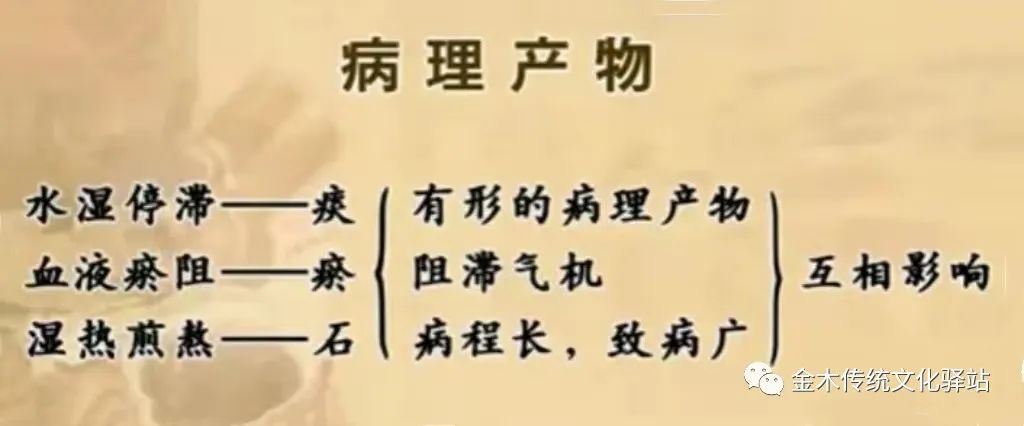
 Phlegm and Fluids
Phlegm and Fluids
Phlegm and fluids are pathological products formed due to metabolic disorders of body fluids.
Dampness accumulates as water, and accumulated water becomes fluids, which condense into phlegm.
Thick and turbid is phlegm, clear and thin is fluids, and clearer is water.
Visible phlegm: can be seen, heard, and felt.
Invisible phlegm: requires pattern differentiation to seek causes (treatment based on counter-evidence).
Invisible phlegm: mania (phlegm obstructing the heart orifices) requires phlegm-transforming herbs.
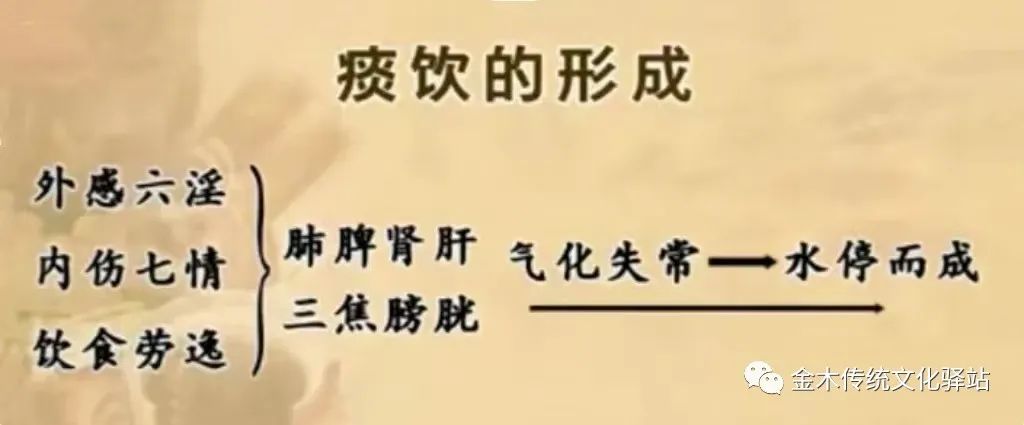
Pathogenic characteristics of phlegm and fluids:
1. Obstructs the circulation of Qi and blood.
2. Affects the metabolism of body fluids.
3. Pathogenicity is widespread and variable.
4. Easily obscures the spirit.
Phlegm and blood stasis:
The spleen cannot transform and transport dampness, leading to the spleen being first affected, which later causes spleen dampness to invade the lungs.
Strange diseases often involve phlegm, blood stasis, and wind.
The spirit must be clear and bright.
 Blood Stasis
Blood Stasis
Blood stasis refers to the stagnation of blood within the body, which cannot circulate normally. It refers to both blood that accumulates within the body and blood that is obstructed in the channels and organs.
Formation of blood stasis: Six types of external pathogenic factors. (Including external pathogens, emotions, diet, work and rest, external injuries – Qi and blood dysfunction – blood stasis.)
Formation of blood stasis:
Blood loss leads to stasis.
Qi stagnation leads to stasis.
Deficiency leads to stasis.
Blood heat leads to stasis – scorches fluids, forcing blood to move erratically.
Blood cold leads to stasis.
Deficiency leads to stasis: Insufficient Yang Qi fails to warm, and blood circulation is weak; Yin deficiency causes vessels to lose moisture and become rigid.
Yang deficiency – cold congeals.
Arteriosclerosis requires phlegm-transforming and blood-activating herbs.
Qi stagnation – blood stasis.
Pathogenic characteristics of blood stasis:
Impairs blood circulation.
Affects the generation of new blood [Old blood does not leave, new blood does not form].
Fixed location of disease, diverse symptoms.
Pain: often sharp, fixed pain, worsens at night.
Masses: superficial – local bruising and swelling; internal – hard and fixed.
Bleeding: blood is dark purple, recurrent and unceasing.
Qi stagnation: distending pain, non-fixed pain.
With blood stasis – use phlegm-transforming and blood-activating herbs together.
Bleeding – use blood-activating and hemostatic herbs [Tian Qi/Lotus Root Nodes].
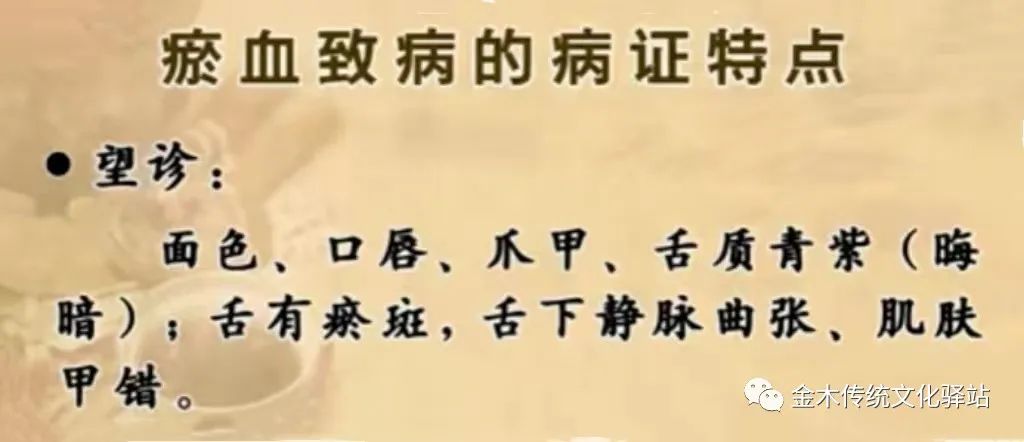
Characteristics of diseases caused by blood stasis:
Observation:Facial color, lips, nails, tongue with purple (dark) color; tongue has stasis spots, varicose veins under the tongue, skin with bruising.
Pulse: Choppy, knotted, intermittent.
Symptoms: Palpitations, chest tightness, pain in the heart area, worsens with cold and emotional distress,sharp pain, obesity, fatigue, shortness of breath, pale dark tongue, greasy coating, choppy and weak pulse.
 Stones
Stones
Stones: Refers to pathological products that form and stagnate in certain parts of the body, resembling sand or stones.
Causes of stone formation:
Improper diet: Preference for rich and fatty foods, excessive alcohol consumption, leads to internal damp-heat (fatty foods easily lead to damp-heat).
Many cases of coronary heart disease present this way, blood stasis | heart Qi deficiency | dampness | phlegm | Yang deficiency | Qi stagnation – tonify heart Yang, invigorate blood, activate Qi, dispel phlegm, and eliminate dampness.
Causes of stone formation:
1. Improper medication.
2. Emotional internal injury: Liver fails to regulate, bile accumulates, and forms stones.
3. Differences in constitution.
4. Long-term illness causes damage.
5. Commonly occurs in the liver, gallbladder, stomach, and urinary system.
 Drug Pathogen & Medical Errors
Drug Pathogen & Medical Errors
Drug Pathogen: Refers to a class of pathogenic factors that cause diseases due to improper processing or use of medications.
Medical Errors: Refers to worsening of conditions or the emergence of other diseases due to physician negligence.
 Fetal Toxins
Fetal Toxins
Fetal Toxins: Refers to the insufficient or abnormal essence and blood inherited from parents by the fetus, leading to developmental disorders or adverse conditions (hereditary diseases or congenital deficiencies).
Congenital Factors: Refers to factors that can cause diseases that are latent before birth. This includes hereditary factors from parents and factors formed during the fetal development period and childbirth.
Narrow sense: Certaininfectious diseases transmitted from parents to offspring during the fetal period.
Broad sense: In early pregnancy, if the mother is affected by pathogenic Qi or improperly uses medications or consumes substances harmful to the fetus, it leads to toxins being passed to the fetus, resulting in certain diseases after birth.

Significance of Studying Body Constitution Theory:
-
Analyzing the laws of disease occurrence, development, and evolution.
-
Important significance for diagnosis, treatment, prevention, health preservation, and rehabilitation.
-
Overall understanding of individual life characteristics.
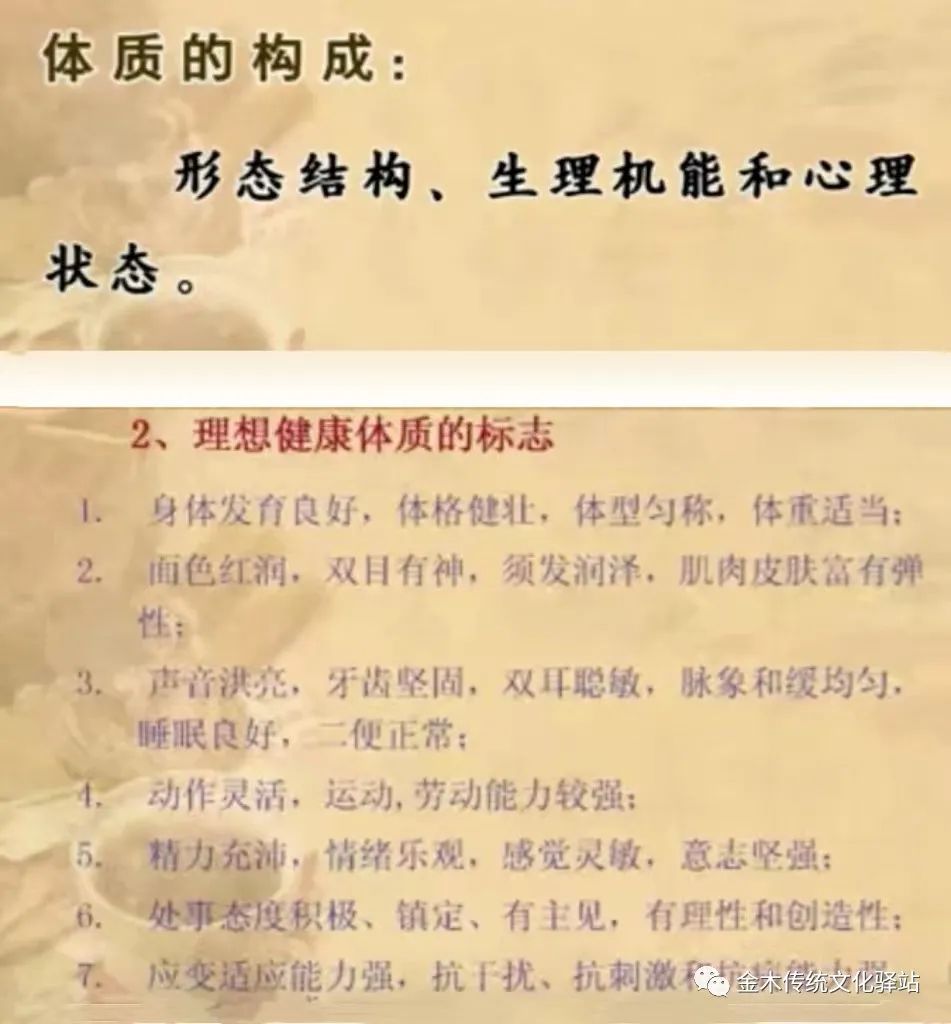
Basic Concept of Body Constitution: Body constitution is the relatively stable inherent characteristics of individuals determined by genetic and acquired factors, manifested in morphology, physiological functions, and psychological activities throughout life.
Body constitution is a physiological tendency.
Constituents of Body Constitution::
1. Differences in morphological structure.
2. Differences in physiological functions* (strength and bias of various system functions, the body’s resistance to disease, and self-regulation ability).
3. Differences in psychological state (psychological characteristics are linked to morphological skills).
Characteristics of Body Constitution:
-
Genetic inheritance.
-
Diversity of differences.
-
Tendency towards group similarity.
-
Relative stability, dynamic variability.
-
Continuously measurable.
-
Adjustable after birth.
Body Constitution – Sub-health – Disease
Relationship between Body Constitution and Internal Organs, Meridians, Essence, Qi, Blood, and Body Fluids:
1. The prosperity and decline of internal organs determine the differences in body constitution.
2. The amount of Qi and blood in the meridians affects the external morphological characteristics of the body constitution.
Factors Affecting Body Constitution:
-
Age factors: Children, youth, elderly.
-
Dietary factors: The structure of diet and nutritional status affect body constitution.
-
Gender differences: Differences in morphology, function, and psychology.
-
Injury from work and rest.
-
Emotional factors.
-
Geographical factors.
-
Diseases, medications, and other factors.
Factors Affecting Body Constitution: Diseases, medications, and other reasons.
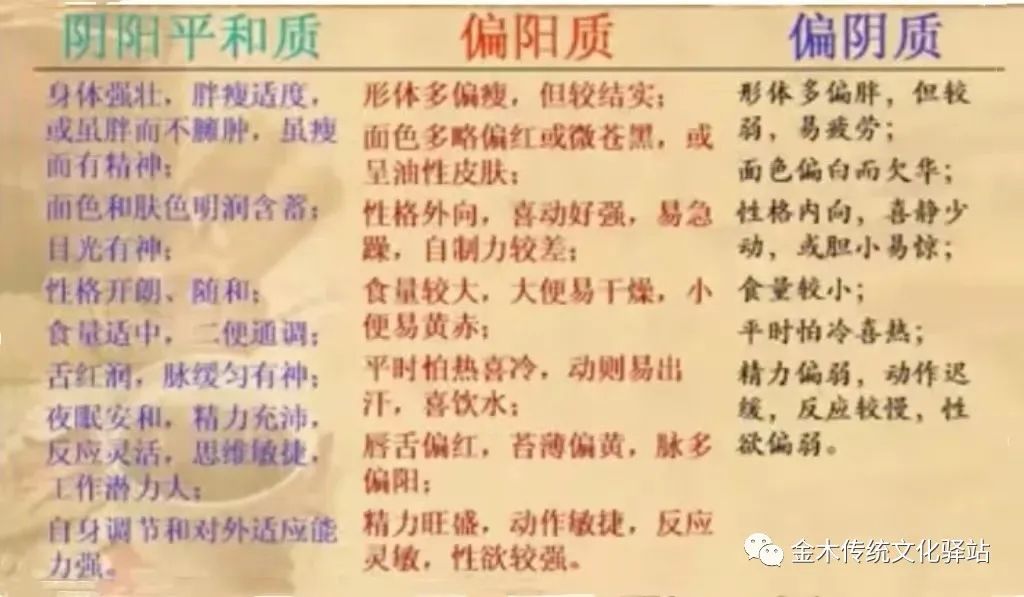
Application of Body Constitution Theory: Explains individual susceptibility to disease.
-
Afraid of wind – Qi deficiency.
-
Afraid of dampness – spleen deficiency.
-
Food stagnation – spleen deficiency.
Obese individuals often have phlegm and dampness, while thin individuals often have heat.
Organ Qi tends to accumulate and vary – responses to emotions differ.
Individuals with a Yang constitution should prefer sweet, cold, sour, and salty foods, and avoid spicy, hot, and warming foods, as well as bitter cold foods.
Bitter flavors harm body fluids.
Individuals with a Yin constitution should prefer warming and tonifying foods, and avoid bitter cold foods that drain heat.
Disseminate TCM health knowledge, promote Chinese traditional culture,share health concepts, and convey care, passing health knowledge and traditional culture to more friends…
People are great because they have dreams; we are different because we have love.
Liu Qing Ning: 186 9643 6785 or (WeChat ID)
Yang Shun Song: 138 7171 7447 or (WeChat ID)
